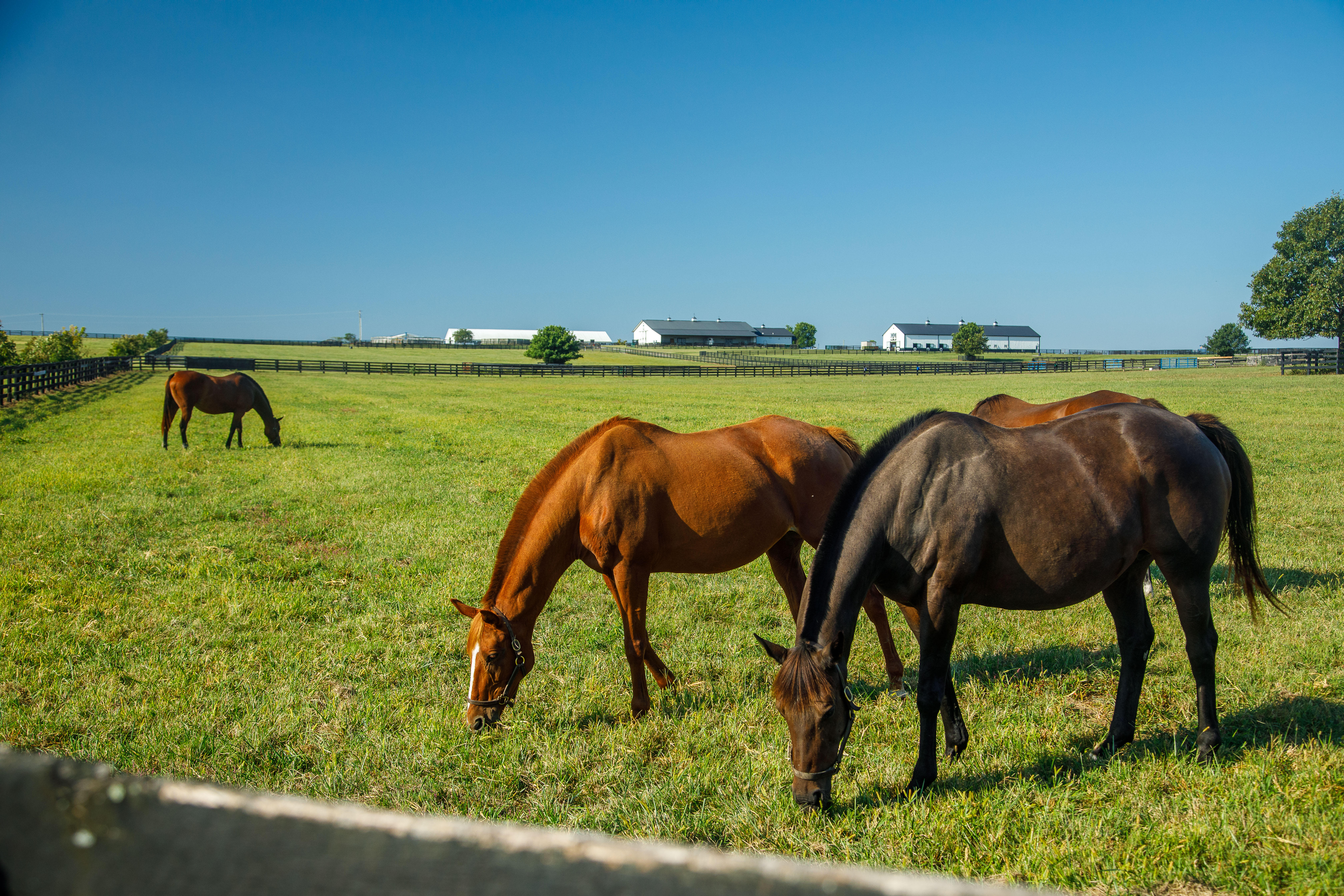Kentucky horse farm managers need to purchase grass seed for fall pastures now
Kentucky horse farm managers need to purchase grass seed for fall pastures now


Kentucky horse farms rely on Oregon’s Willamette Valley for seed. The region is the largest producer of turf grass and cool-season forage seed in the world. With ongoing drought conditions straining supply, University of Kentucky forage specialists encourage horse farm owners to secure their seed now.
“A lot of stores where our owners buy their seed, especially for higher-end and higher-quality seed varieties, don’t keep seed in stock,,” said Krista Lea, Horse Pasture Evaluation Program coordinator for the UK Martin-Gatton College of Agriculture, Food and Environment. “The key is to ask now, so that seed can start making its way in this direction.”
The most predominant forage grass in the United States, covering over 36 million acres, is tall fescue, a cool-season perennial grass. Its desirable characteristics include drought and flooding tolerance, ability to handle heavy grazing pressure and long growing season.
Kentucky-31 Tall fescue contains a fungal endophyte that grows in the plant and is responsible for many of tall fescue’s desirable survival attributes. However, the fungal endophyte and the ergot alkaloids it produces, especially ergovaline, can harm livestock and cause a syndrome called tall fescue toxicosis.
Lea encourages horse owners to plant novel endophyte tall fescue varieties to avoid problems, but those varieties are harder to find in the current seed market.
The repercussions of not getting seed in time to plant vary.
“If you’re buying seed because you need to overseed a pasture to thicken it up, you’re going to have a thinner stand and more weeds if you don’t overseed,” Lea said. “You won’t have as much quality forage and will probably end up feeding hay sooner.”
Those establishing new pastures will face more challenging circumstances as the pasture would likely sit fallow until next spring. Lea said that also delays grazing by at least six months.
“If you miss the seeding window, most people end up planting less desirable species or varieties and limp through it,” she said. “Then, they’ve spent all this time, money and effort to renovate a pasture, yet they weren’t able to put in the product they wanted.”
There is also the challenge of Kentucky’s unpredictable fall weather.
“Last year was a horrible year for getting pastures established,” she said. “The only ones that appeared to do well were the ones that were seeded early.”
Later-seeded pastures fared poorly because conditions went dry.
“That’s not always the case, sometimes it’s the other way around,” Lea continued. “Regardless of weather, if the seed is still in the bag, it’s obviously not going to help your pasture. And, if the seed is still sitting in Oregon, it’s really not going to help your pasture.”
To learn more about novel endophyte tall fescue, visit https://grazer.ca.uky.edu/content/novel-endophyte-tall-fescue. To learn more about pasture renovation, visit https://grazer.ca.uky.edu/content/overseeding-pastures-kentucky. To learn more about establishing horse pastures, refer to the UK Cooperative Extension Service publication https://forages.ca.uky.edu/files/establishing_horse_pastures.pdf.
Ag Equine Programs Extension Weather


